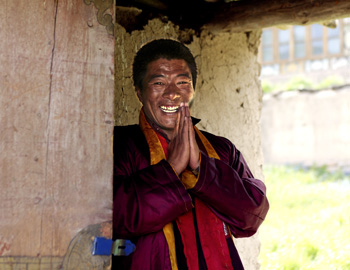The smile of the Buddha celebrates the peaceful victory over ignorance, hatred, craving, arrogance and jealousy. But there is also the smile of a loved one, the smile of one who loves, a mother’s smile and the smile of a child – ‟To know your mother, O child, learn to read in the book of her smile,” wrote Virgil – the smile of one who contemplates an well-completed work, a smile free of all regret, the smile of a generous goodness free of ostentation, the smile of one who has fully given the measure of himself, the smile of one who chooses to lose in a conflict rather than lose respect for himself, the smile of inner peace …
A smile can dissolve the barriers that separate us from each other. It expresses the awareness of our common humanity. Setting mistrust aside, a smile indicates our acceptance of the vulnerability associated with trusting in others. It then transforms this vulnerability into strength as trust help us work together rather than struggling alone.
I heard a blind person say, ‟When I smile with my lips, I feel the muscles in my face contracting, but I don’t really have the inner experience of smiling. Without seeing the smile that lights up on the other’s face in response to mine, smiling feels for me as sending a dead letter. Because what matters most in a smile, is the smiles that echoes yours. Yet, I can smile with my voice and hear the other person’s smile.” from the recent photobook 108 Sourires
